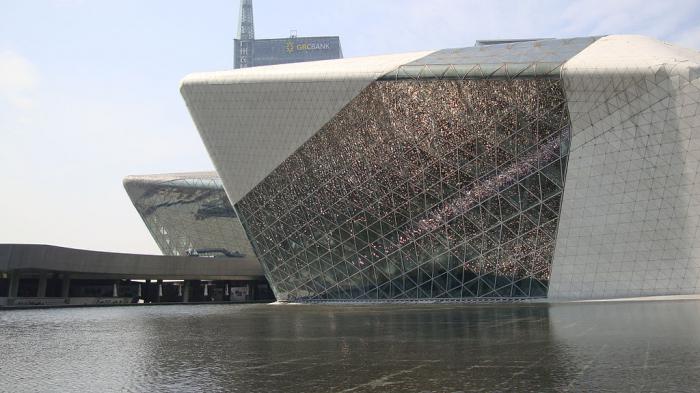When traveling in China, it is absolutely impossible to ignore Guangzhou. Photos of the city are so different from each other that it is difficult to form an idea of this metropolis from them - the third most important in the Middle Kingdom after Beijing (the capital) and Shanghai. The state-of-the-art skyscrapers and bustling traffic on the streets of Guangzhou make it an internationally recognized center of commerce. But no, no, and the centuries-old antiquity will show through this gloss of modernity and hi-tech. After all, the city is over two and a half thousand years old! In this article, we will tell everything that is possible in a short outline about the glorious history of Guangzhou. This port city is famous even for the fact that the long but famous Silk Road to Europe began with it. Today, only the memory of the legendary trading past is kept in its "stone jungle" Guangzhou. We will tell you about the main attractions of the city. How to see the flavor and interesting places of Guangzhou, spending as little money and time on transport as possible?
common data
We have already mentioned that this is the third largest metropolis in China. Guangzhou, formerly known as Canton, is the capital of Guangdong province in the south of the country. This metropolis lies on the seashore, in the Pearl River Delta (Zhujiang). The area of Guangzhou city is seven and a half thousand square kilometers. But this is not the limit. After all, Guangzhou forms one of the largest conurbanizations in the world, which is called the "Zhujiang Delta Economic Zone". Together with small settlements that were absorbed by the city, the area of the metropolis was 9123 square kilometers. Guangzhou is densely populated. The center alone is home to seven and a half million people. And together with the outskirts, the population of Guangzhou is 14,755,000 people. As for the Pearlian Delta Economic Zone, forty-seven million people live in it. The population density in the city is serious - one and a half thousand people per square kilometer. The following statistics show the rapid growth of Guangzhou. In 1977, the city's population was "only" five million. In 2003 it more than doubled (10.5 million).
Guangzhou: history of the city
This Chinese metropolis actually has several names. It is often referred to as Yan-Chen (City of Five Goats). These animals even adorn the coat of arms of Guangzhou and, of course, are depicted on souvenirs. Another metropolis is called Sui-Chen (the City of five spikelets of rice). There is a beautiful (but far from the historical truth) legend about animals and grains in Guangzhou. There was once a small village here. And its inhabitants were dying of hunger. The sky took pity on the poor peasants and five bodhisattvas descended from the clouds on five goats. The animals had an ear of rice in their mouths. All the inhabitants ate these grains, and even sowed them in their fields. After that, an era of prosperity began for the Chinese city of Guangzhou.
But in reality, it was a little different. The city was founded in 862 BC as a port on the coast of the South China Sea. Its prosperity was based on trade with India and the Arab world. The Silk Road began from Guangzhou. This city was the first in China to maintain trade relations with Europe (from the 16th century). The backbone of the Guangzhou economy has not changed even now. It hosts the world trade fair twice a year.

Guangzhou districts: where a tourist can stay
The huge metropolis is administratively divided into ten districts and two counties. But for the average traveler, not all of them are of interest. To make Guangzhou city tourism as low as possible on transportation costs, it is best to find a hotel in Yuexiu, Liwan and Haizhu districts. For those who are interested in shopping, the Tianhe area is suitable. But, in addition to markets and shopping malls, it also houses the Opera House, made in a futuristic style, and the Guangdong Provincial Museum. Yuexiu is the most prestigious area in Guangzhou. There are many parks, there is an Orchid Garden. All of Guangzhou's famous temples are also located in Yuexiu. But the hotels in this area are solid “fours” and “fives”. For the thrifty tourist, Lebanon is more suitable. In addition to budget housing, the area attracts by its proximity to the Cheng Clan Academy and the Garden of Lakes. In Haizhu there is such a landmark of the city as the TV Tower. You can climb to its observation deck to admire Guangzhou from a bird's eye view.
When to Go to South China: The Best Seasons
The geographical parallel on which the city of Guangzhou lies is twenty-three degrees north latitude. It is south of the Tropic of Cancer. But the climate in the city is cooler than geographic location might suggest. It can be described as subtropical. In January 2016, there was even a snowfall here. True, this event occurs once in 80-90 years. Winters here are mild, with temperatures of + 14-15 degrees, and relatively dry. It is often rainy and hot here in summer. July temperatures range from +25 to +32 degrees. The climate of Guangzhou city forms a monsoon, the season of which covers a long period from April to October.
